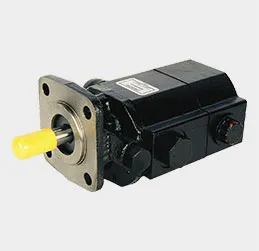Exploring the Benefits and Applications of Zinc Die Casting in Modern Manufacturing
The Advantages and Applications of Zinc Die Casting
Zinc die casting is a popular manufacturing process that has gained significant attention across various industries due to its unique properties and benefits. This method involves injecting molten zinc into a mold under high pressure, allowing for the production of complex shapes with high accuracy and a superior finish. The versatility of zinc die casting makes it an attractive choice for both large-scale production and prototyping.
One of the primary advantages of zinc die casting is its cost-effectiveness. Zinc, as a base metal, is relatively inexpensive compared to other metals like aluminum or magnesium. This affordability translates into lower material costs for manufacturers, making it an ideal choice for producing a wide range of components. Furthermore, zinc die casting allows for the production of intricate designs and detailed features without the need for extensive machining, further reducing production costs.
Zinc die casting also boasts a remarkable ability to produce high-quality surface finishes. The process results in a smooth and polished surface that often requires little to no secondary finishing. This characteristic is especially beneficial for industries where aesthetics and appearance are crucial, such as automotive and consumer electronics. The fine surface finish also enhances the corrosion resistance of zinc castings, making them suitable for outdoor use in various applications.
Durability is another significant benefit of zinc die casting. Zinc alloys possess high tensile strength and structural integrity, which allows cast components to withstand stress and wear over time. This durability makes zinc die casting an appropriate choice for manufacturing components that require long service life, such as gears, brackets, and housings. In addition, zinc’s ability to resist corrosion makes it an ideal choice for products exposed to harsh environments, thereby extending the lifespan of these components.
zinc die casting

Another noteworthy aspect of zinc die casting is the rapid production capability it offers. The process allows for the creation of numerous castings in a short timeframe, making it an efficient option for mass production. With the use of automated die casting machines, manufacturers can produce thousands of identical parts quickly, meeting the demands of large-scale projects while maintaining consistent quality.
Zinc die casting is also highly versatile in terms of design possibilities. It can accommodate a range of geometries and sizes, enabling manufacturers to create complex shapes and features that may not be feasible with other manufacturing processes. This versatility extends to the integration of inserts, threads, and other components directly into the casting, further enhancing the functional capabilities of the produced parts.
The application of zinc die casting spans across various industries, including automotive, aerospace, electronics, and consumer goods. In the automotive sector, zinc die-cast components are used in various applications, from engine blocks to intricate trim pieces. The electronics industry utilizes zinc die casting for housings and connectors due to its excellent electromagnetic shielding properties. Additionally, consumer products, such as hardware fittings and toys, frequently employ zinc die-cast parts for their durability and aesthetic appeal.
In conclusion, zinc die casting is a highly effective manufacturing process that offers numerous advantages, such as cost-effectiveness, high-quality finishes, durability, rapid production, and design flexibility. Its broad range of applications in various industries highlights its significance in modern manufacturing. As technology continues to advance, zinc die casting is poised to remain a staple in producing high-quality components across diverse sectors, ensuring efficient and sustainable production practices for years to come.
-
Precision Casting Prototypes and Engineering Inc – Innovating Global Manufacturing SolutionsNewsNov.24,2025
-
Precision Casting Facility: Advanced Manufacturing for Global Industries | Hairun SourcingNewsNov.23,2025
-
Leading Precision Casting Corporation: Quality Metal Components for Global IndustryNewsNov.23,2025
-
Precision Cast Rods: Definition, Applications & Future Trends in ManufacturingNewsNov.22,2025
-
Precision Cast Iron Surface Plate: The Backbone of Industrial Accuracy and QualityNewsNov.21,2025
-
Precision Aluminum Investment Casting: High-Accuracy Manufacturing for Modern IndustriesNewsNov.20,2025















